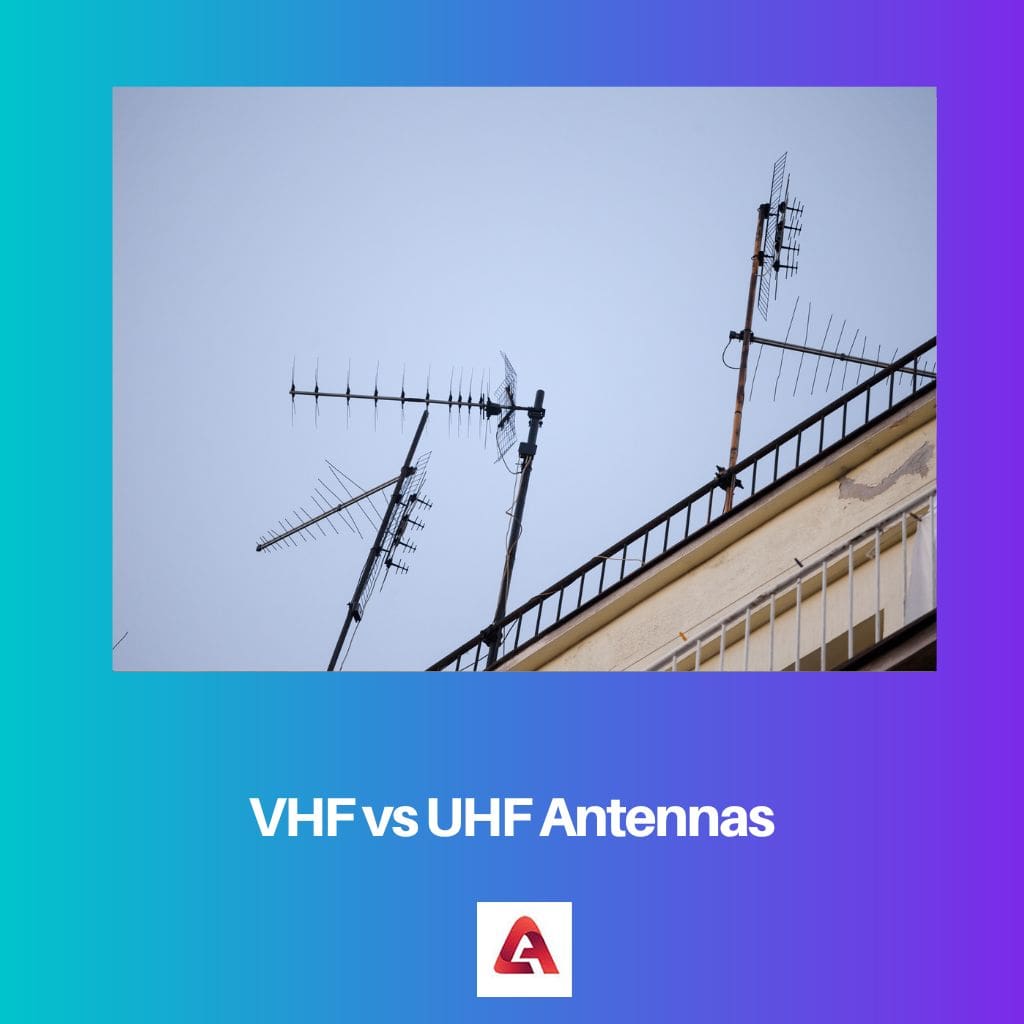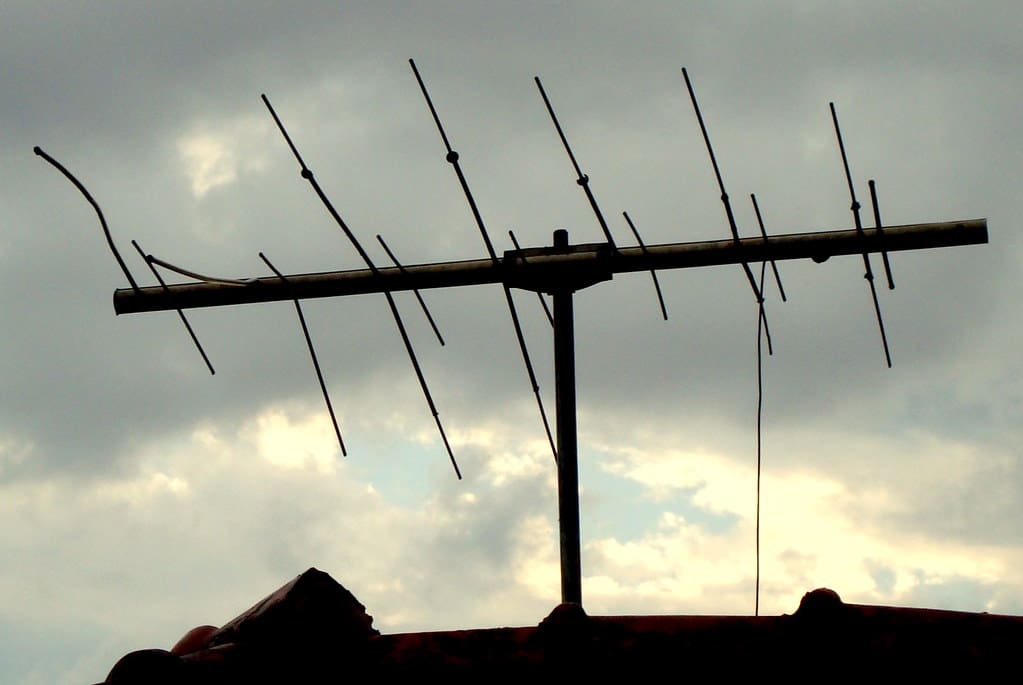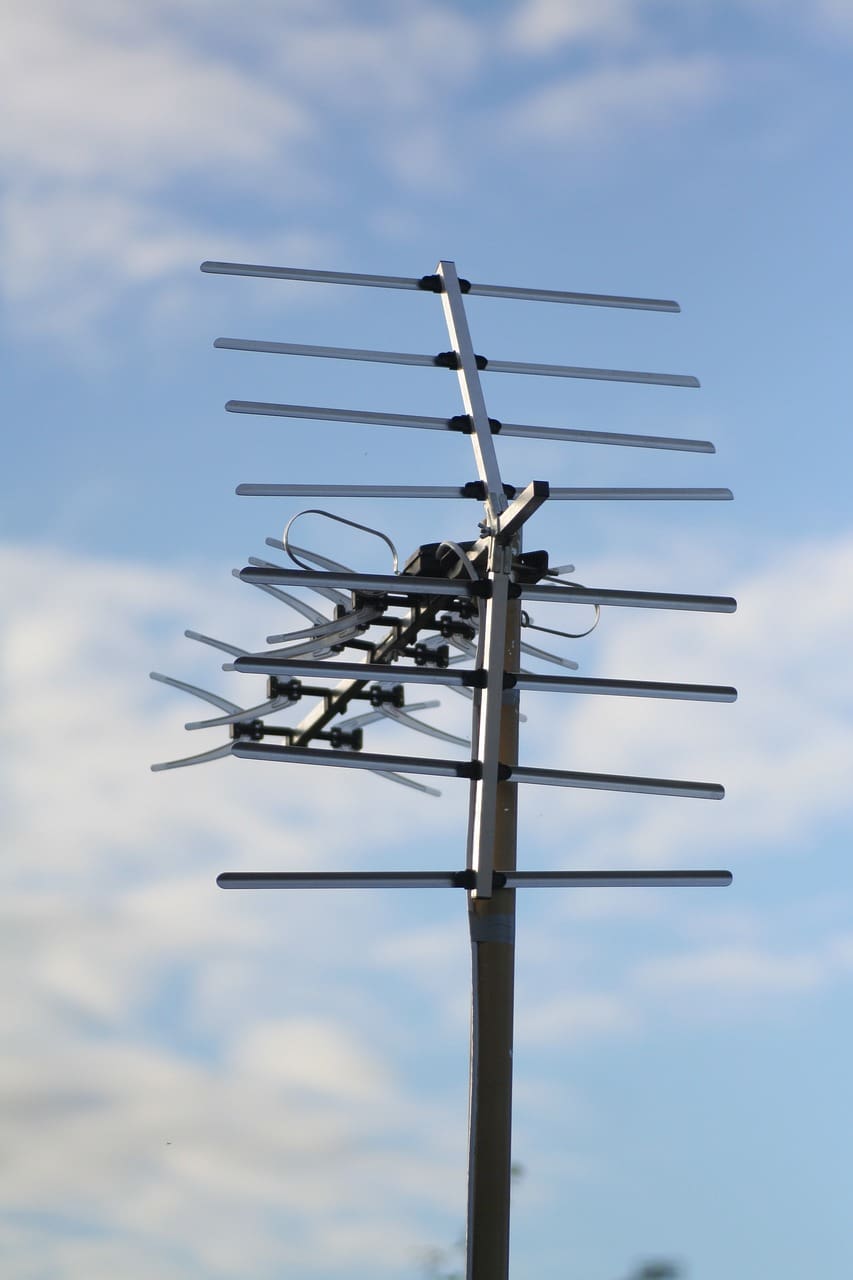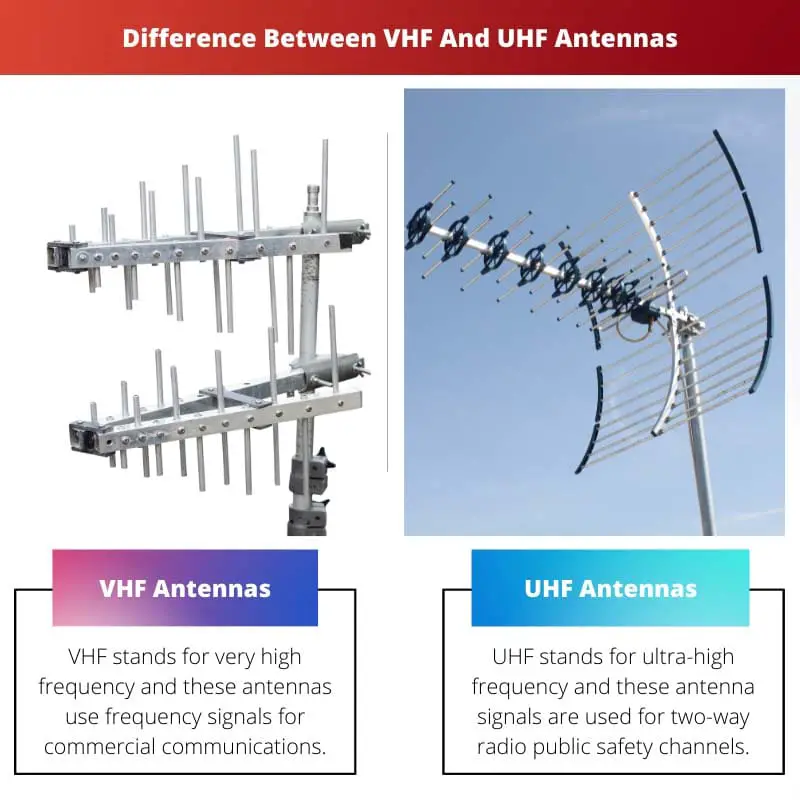The Federal Communication Commission (FCC) controls the operating frequencies in every wireless communication, such as radios and cell phones.
Knowing the differences between VHF and UHF Antennas will give you a better understanding of choosing the right antenna.
High-frequency electricity is generated by a transmitter, which is absorbed by the antenna and coupled into space as electromagnetic waves.
When the antenna is removed while the transmitter generates high-frequency energy, phenomena occur. The energy flows until the antenna is removed when it reflects the transmitter on the same conductor from which it emerged.
That being the case, it is important to have an antenna.
Key Takeaways
- VHF (Very High Frequency) antennas operate in the 30 to 300 MHz range, whereas UHF (Ultra High Frequency) antennas function between 300 MHz and 3 GHz.
- UHF signals can penetrate buildings and urban environments more effectively than VHF signals.
- VHF antennas are larger than UHF antennas due to the lower frequency range.
VHF vs UHF Antennas
The difference between VHF and UHF antennas is that the VHF has slightly larger antennas that directly help to improve its range and how far it can travel. On the other hand, UHF antennas are small and have stubby antennas.

Very high-frequency antennas, or VHF, are internal parts of regularity systems. These are majorly used in systems ranging from 30 to 300 MHz to receive signals.
VHF antennas in the outdoors have V-shaped elements and some clustered straight elements.
Ultra high-frequency antennas, or UHF, are used majorly in TV broadcasting, cell phones, and other wireless communications channels and satellites, including GPS.
UHF antennas have small elements and are only a few inches wide. You can distinguish these antennas by their arrangement in parallel rows of straight prongs.
Comparison Table
| Parameters of Comparison | VHF Antennas | UHF Antennas |
|---|---|---|
| Meaning | UHF stands for ultra-high frequency, and these antenna signals are used for two-way radio public safety channels. | UHF stands for ultra-high frequency and these antenna signals are used for two-way radio public safety channels. |
| Range of Frequencies | Very high-frequency waves. | Smaller frequency waves. |
| Battery life | VHF doesn’t use a lot of its battery life. | UHF uses a lot of battery life compared to VHF. |
| Cost | VHF antennas come at a lower cost. | UHF antennas come at a higher cost. |
| Signal Travelling | VHF antennas signal mostly travel outdoors. | UHF signals from antennas can travel through wood, steel, and concrete, etc. |
What are VHF Antennas?
A VHF, or aerial, is a high-frequency antenna that transmits signals through its device for communications, such as radios, televisions, cell phones, and other cordless phones.
The waves of frequency range from as low as 3 MHz to as extremely high as 30 MHz. Some CB radios and shortwaves use very high frequency, but it is commonly used for FM radio.
VHF cannot exceed the local radio horizon of 100 miles. Atmosphere noise, any electrical equipment causing trouble, and other interferences are less likely to cause disturbances in VHF frequencies.
There are different kinds of bands present in VHF frequency. Low band VHF frequencies and high band VHF frequencies are present within VHF frequency.
The low band frequency range is 49 MHz and is found in radio-controlled toys, cordless phones, and in the transmission of wireless microphones, etc.
The higher band frequencies ranging from 54 to 72 MHz, operate in 2 to 4 channels and some wireless networks. The higher band frequencies that range from 76 to 88 MHz operate in 5 to 6 channels.
VHF antennas are the simplest antennas for your outdoors.

What are UHF Antennas?
Ultra-High Frequency (UHF) is a term used to describe a lower frequency frequency. It’s a band between VHF and SHF, or Very High Frequency and Super High Frequency, respectively.
The frequency range for ultra-high frequency is 300–3000 MHz (3GHz). The military, notably the Navy, embraced and exploited this band form, and it became “stuck.”
YV sets used to have 11 VHF channels, and then the FCC opened up UHF for TV, giving at least one, and in some cities, two additional TV channels.
These antennas were mainly smaller stations that weren’t linked with any network, such as NBC, CBS, or ABC, and instead bought syndication rights for older shows and made their own locally produced shows.
The production’s sets resembled something you’d see in a high school play, and they occasionally fell over and collapsed in the middle of the show.
UHF is seen as a selectable between channel kinds on very ancient TVs (dials for controls and no remote style old). In this case, it’s similar to the difference between FM and AM on the radio. This also applies to radio bands.

Main Differences Between VHF And UHF Antennas
- VHF uses bands 1 and 2, while UHF uses Bands 3 and 5.
- VHF has longer wavelengths and less capacity, whereas UHF has shorter wavelengths and more bandwidth, allowing it to transmit more data if needed.
- Since VHF has a larger range, it needs a longer antenna (although fatter, shorter ones can be used). UHF doesn’t go as far as VHF but bends better around and inside structures.
- VHF allows less data to transmit since it has bigger wavelengths, and since UHF has shorter wavelengths, channels require more bandwidth, allowing more data to be transmitted.
- VHF is good for open spaces, while UHF is good for cities.
- Broadcast radio, marine communications, air traffic control, and beacons are all best suited with VHF antennas. In contrast, cellphones, 2.4 GHz WiFi and Bluetooth, and TV broadcasts are all best suited with UHF.

- https://books.google.com/books?hl=en&lr=&id=6DG09xOjbkMC&oi=fnd&pg=PR9&dq=vhf+and+uhf+antennas&ots=8ajN1i-i4E&sig=iVrvy5Wbk_9AhX4mq7o5MGwB320
- https://ieeexplore.ieee.org/abstract/document/7294637/

Comical
Ironic
Informative
Negative
Positive
Informative
Argumentative
Positive
Positive
Negative
Sarcastic
Comical
Ironic
Informative